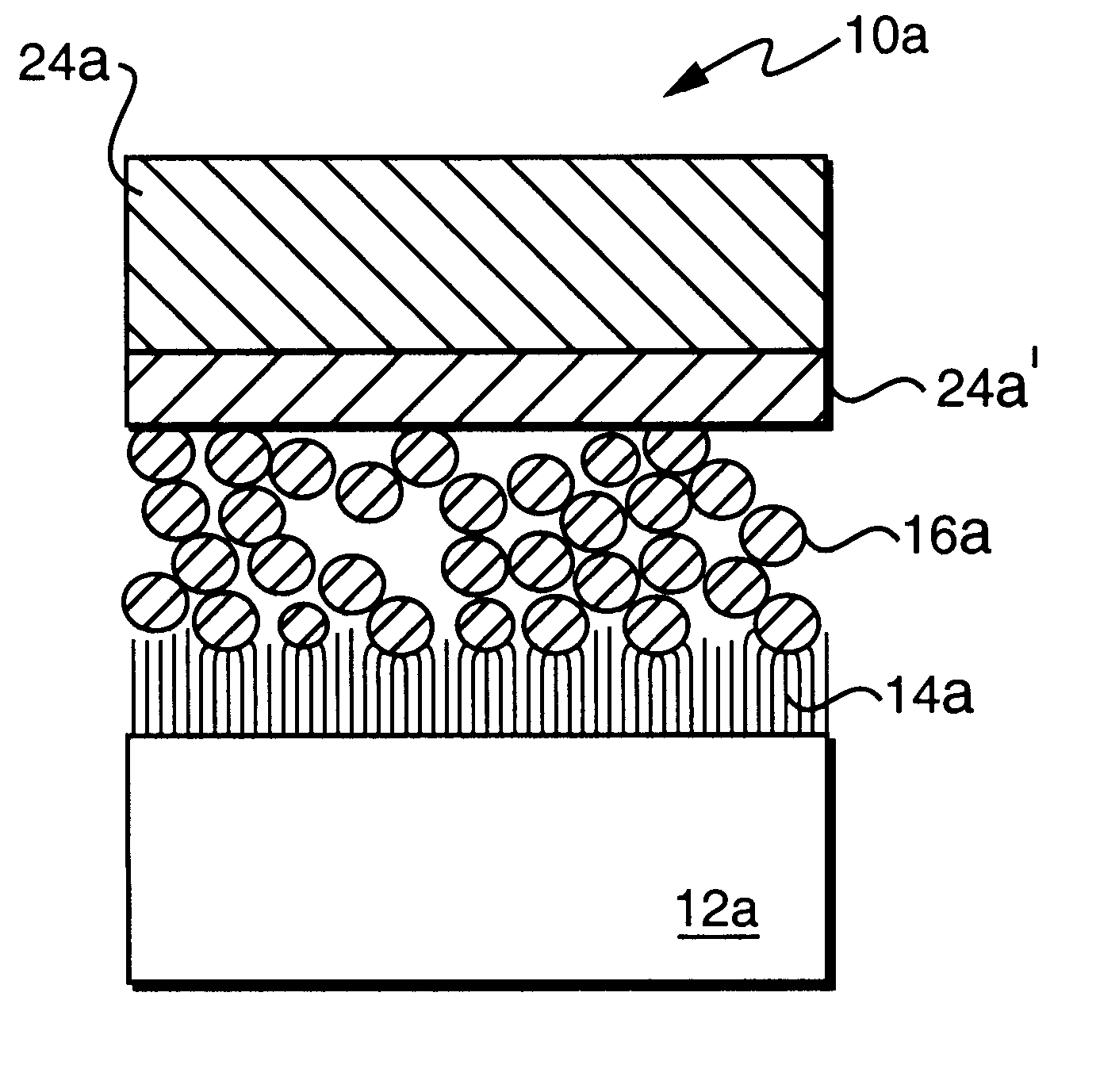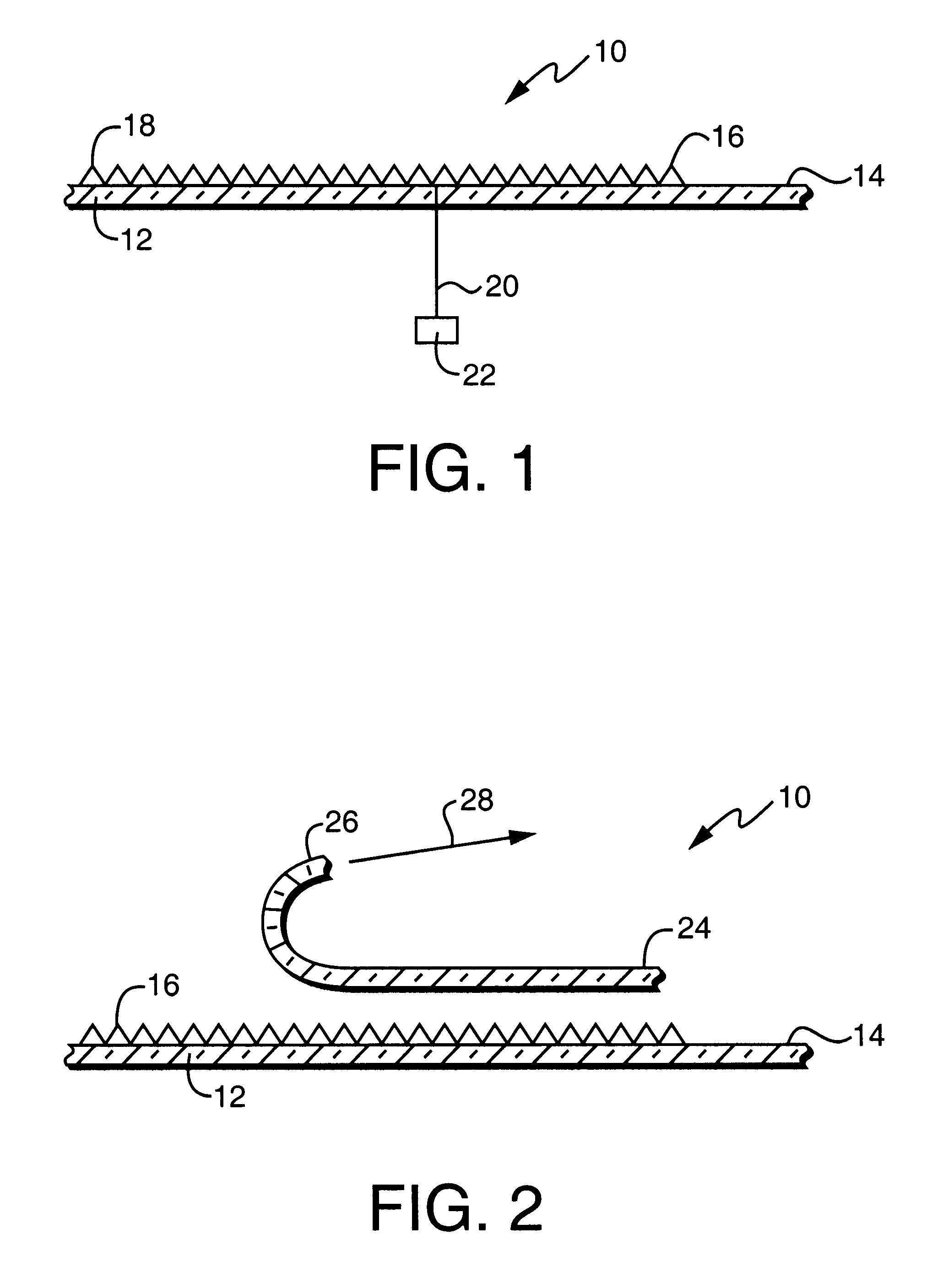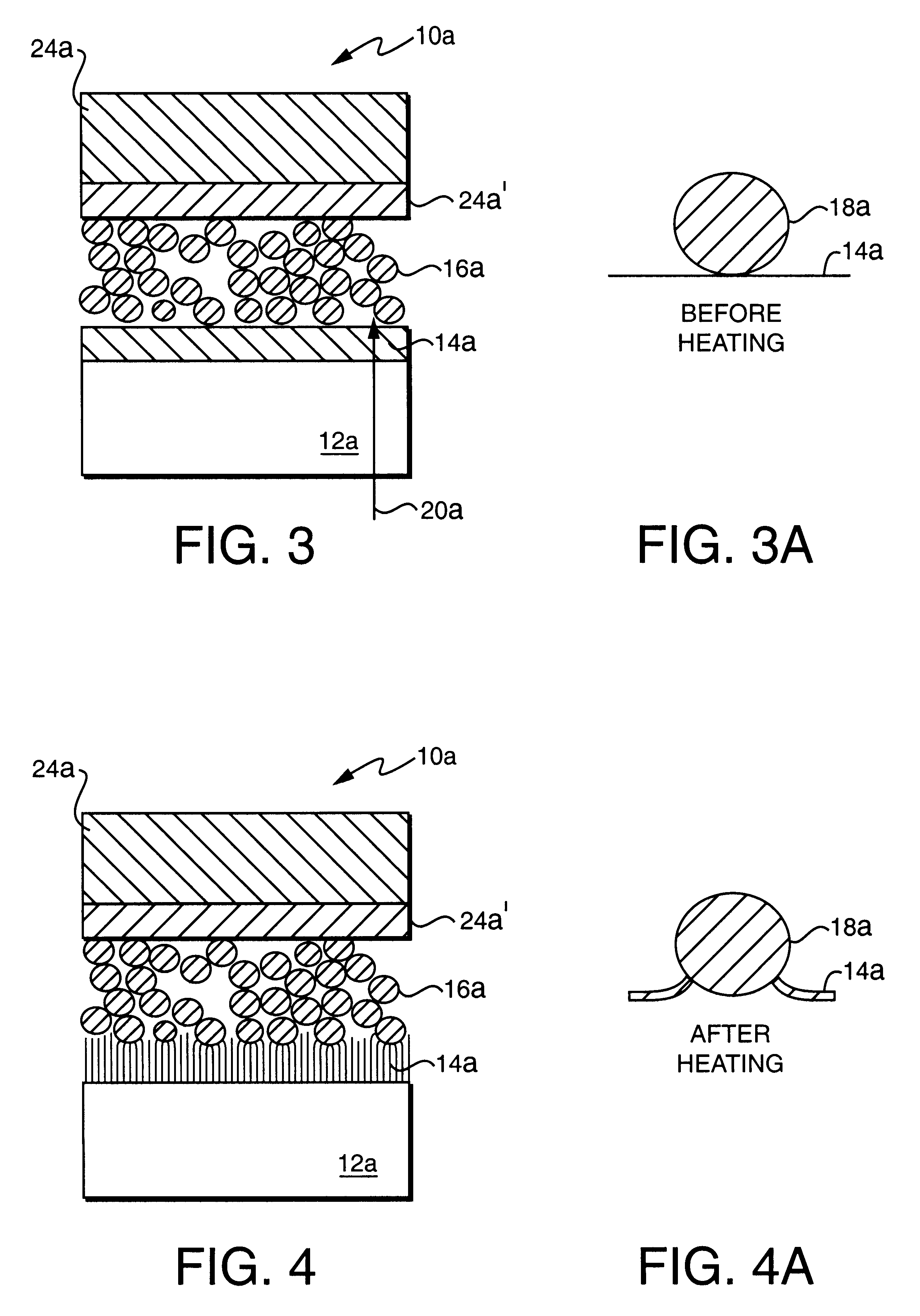Thermal imaging medium
a thermal imaging medium and high resolution technology, applied in thermography, instruments, photosensitive materials, etc., can solve the problems of not consistently yielding images of a resolution sufficiently fine, none of the known thermal imaging materials have found wide acceptance, and the time required for irradiating the medium in this manner is relatively short, so as to achieve the effect of improving abrasion resistan
- Summary
- Abstract
- Description
- Claims
- Application Information
AI Technical Summary
Benefits of technology
Problems solved by technology
Method used
Image
Examples
example ii
A carbon black solution containing no polymeric binder or FLUORAD surfactant was prepared from
4.07 g carbon black solution (45% solids) (sold under the tradename Sunsperse Black LHD-6018 by Sun Chemical Co.)
23.93 g water
and coated onto the Mylar web as in Example I, to give a dry coverage of about 0.7 g / m.sup.2. The structure was exposed through the web and developed as in Example I. This example illustrated the the polymeric binder and surfactant present in Example I are not necessary to connect the exposed carbon black firmly to the surface of the web.
example iii
The unexposed carbon black coated web from Example I was coated with a release layer from a solution consisting of:
2.00 g was emulsion (25% solids) (sold under the tradename Michemlube 160 by Michelman Chemicals, Inc.):
7.92 g water;
0.08 g FLUORAD surfactant
with a No. 10 wire-wound rod to give a dry layer coverage of about 0.04 g / m.sup.2. This was overcoated with a stripping layer from a solution consisting of
60.00 g carboxylated ethylenevinylacetate copolymer emulsion (52% solids) (sold under the tradename Airflex 416 by Air Products and Chemicals, Inc.); and
40.00 g polyvinylacetate emulsion (55% solids) (sold under the tradename Daratak 61L by W. R. Grace & Co.)
to give a dry layer coverage of about 20 g / m.sup.2. The structure was exposed through the web by a laser beam with 0.1 J / cm.sup.2 for 1 microsecond. The stripping layer was peeled from the element leaving a negative carbon black image firmly connected to the surface of the web in areas of laser exposure. The stripping layer ...
example iv
The unexposed carbon black coated web of Example III was laminated at about 75.degree. C. to a second Mylar web of 0.1 mm thickness. The laminated structure was exposed through the carbon black coated web of Example III by a laser beam of 0.1 J / cm.sup.2 for 1 microsecond. After exposure the laminate was peeled apart to produce one negative and one positive image. The negative image consisted of exposed carbon black firmly connected to the surface of the web of Example III. The positive image consisted of unexposed carbon black adhered to the surface of the stripping layer, the latter being adhered to the surface of the second Mylar web. The stripping layer was then peeled from the second Mylar web so the latter could be used again for another lamination and peeling.
PUM
| Property | Measurement | Unit |
|---|---|---|
| thickness | aaaaa | aaaaa |
| viscosity | aaaaa | aaaaa |
| temperatures | aaaaa | aaaaa |
Abstract
Description
Claims
Application Information
 Login to View More
Login to View More - R&D
- Intellectual Property
- Life Sciences
- Materials
- Tech Scout
- Unparalleled Data Quality
- Higher Quality Content
- 60% Fewer Hallucinations
Browse by: Latest US Patents, China's latest patents, Technical Efficacy Thesaurus, Application Domain, Technology Topic, Popular Technical Reports.
© 2025 PatSnap. All rights reserved.Legal|Privacy policy|Modern Slavery Act Transparency Statement|Sitemap|About US| Contact US: help@patsnap.com



